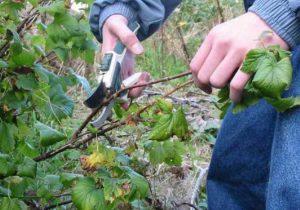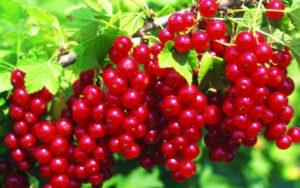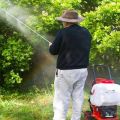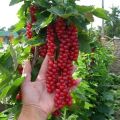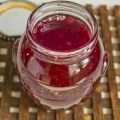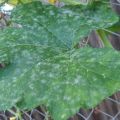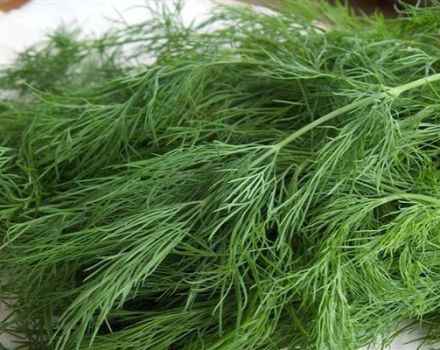Effective measures to combat powdery mildew on currants with drugs and folk remedies
Cultivation of a crop is a complex and painstaking undertaking that takes a lot of time and effort. In this case, it is doubly offensive to lose the fruits of your labor, not recognizing in time the disease that undermines the strength of the plant. Currant bushes are no exception, and the powdery mildew formed on it can ruin not only the harvest, but the entire bush as a whole. Let's see what powdery mildew is on currants, why it occurs, and what measures to combat it exist.
Who is the causative agent of the disease
The disease, known in Russia as American powdery mildew, occurs due to fungal spores that are resistant to negative temperatures and bad weather conditions. Favorable conditions for the occurrence of powdery mildew:
- rainy spring and summer;
- strong wind carrying fungal spores from one bush to another;
- close planting of currants, due to which the disease from one plant quickly spreads to the rest.
Note! Spores are well tolerated by strong winds.
The main signs of the disease
The main signs by which one can determine the infection of the bush are almost identical in white and red currants. The differences are subtle, but worth considering. Also, do not forget that the disease affects each variety differently, and you need to respond to it accordingly.
Black currant
In black currant, the following signs are observed, signaling the need for treatment:
- Leaves, ovaries and shoots are covered with white bloom at an early stage.
- The next stage will be staining the plaque in gray, which indicates the neglect of the disease.
- The leaves begin to die off, changing color and curling.
- The bloom spreads to the berries, changing the color to gray-brown.
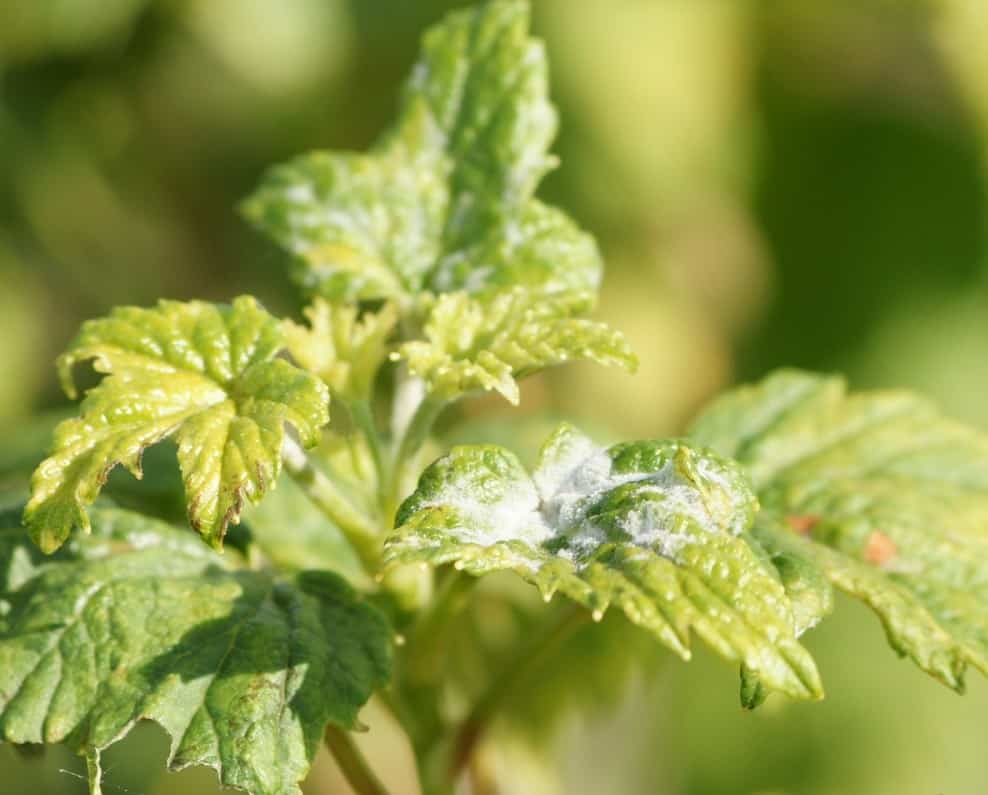
Black currant tolerates infection worse, and if you do not cope with the fungus in time, more than half of the crop will become unusable.
Red
Red varieties cope with the disease more easily; among the symptoms are:
- the formation of a plaque similar to flour;
- cloudy, whitish drops, similar to dew, accumulate on the surface of the leaves.
It is because of these symptoms that the disease got its name.

What is the danger of ailment for currant bushes
Powdery mildew affects currants as follows:
- prevents the development of shoots, killing them;
- destroys the surface of leaves and berries, absorbing the carbohydrates contained in them;
- berries become unsuitable for food and can cause allergic reactions;
- the culture quickly loses its strength and within several seasons, if not intervened in the process, dies.

What varieties are resistant to powdery mildew
The following currant varieties are considered the most resistant to the disease:
- Summer resident. The variety was created for conditions when only periodic care is carried out for it. Differs in maximum resistance to pests.
- Ilya Muromets. The name in honor of the epic hero was given for a reason. The bush has a truly "heroic" immunity, coping well even with powdery mildew.
- Temptation. Another representative of the "robust", successfully resisting infections.
- Titania. The quality of the variety and its resistance is evidenced by the fact that it has been popular since the 60s of the last century.
- Binar. It is known for its original, slightly sour taste and strong immunity, coping with diseases on its own.
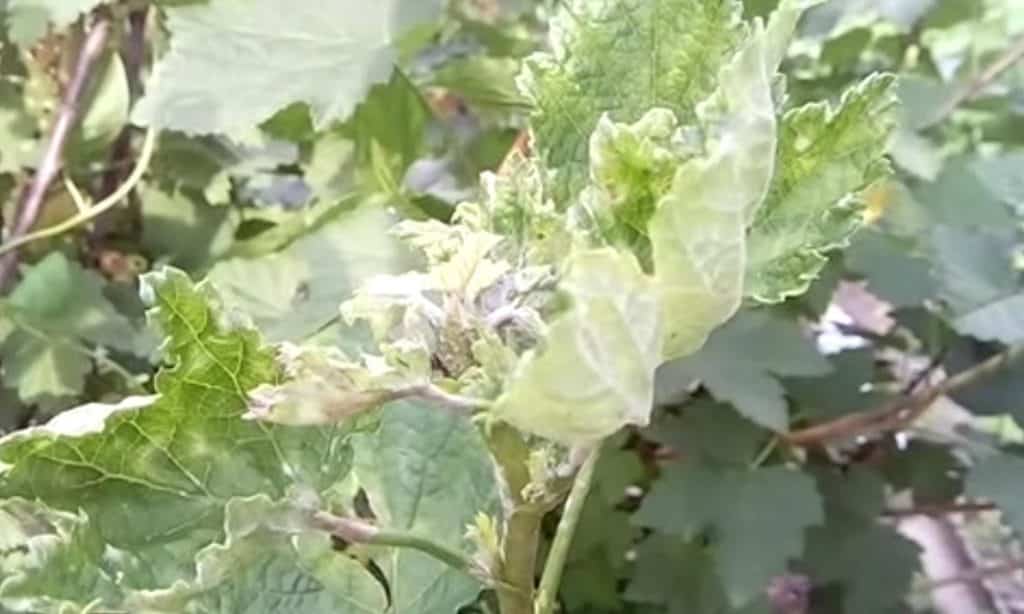
Preventive actions
The main method to resist powdery mildew is the prevention of the disease, which eliminates all problems at the stage of their inception. The following preventive methods are distinguished:
- compliance with agrotechnical requirements;
- periodic treatment with light preparations that delicately eliminate the problem, without any consequences.
We comply with agrotechnical requirements
Following the following rules and plant care techniques will reduce the risk of infection and strengthen the immune system:
- The area where the crop is grown should not be too wet.
- When fertilizing the soil, avoid supplements containing excessive nitrogen.
- It is forbidden to water the bushes from above. Pour water closer to the roots.
- Bad neighbors are roses, cucumbers, or gooseberries.
- Planting currants close to each other is not a good idea.
- As a preventive measure, the tops of the shoots are pinched in the fall and destroyed. This is done in order to remove possible foci of infection.
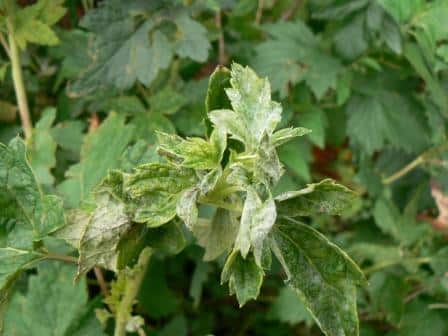
Important! Leaves and berries that have fallen to the ground are gathered in one heap in autumn and burned.
What to treat to avoid infections
Processing is allowed by the following means:
- Bordeaux mixture.
- Nitrofen.
- Copper sulfate.
- Boiling water. Yes, boiling water. Boiling the shrubbery helps prevent powdery mildew. The procedure is required until the bud breaks.
When processing any drugs, remember two rules:
- observe the dosage indicated by the manufacturer;
- do not process bushes during fruiting.
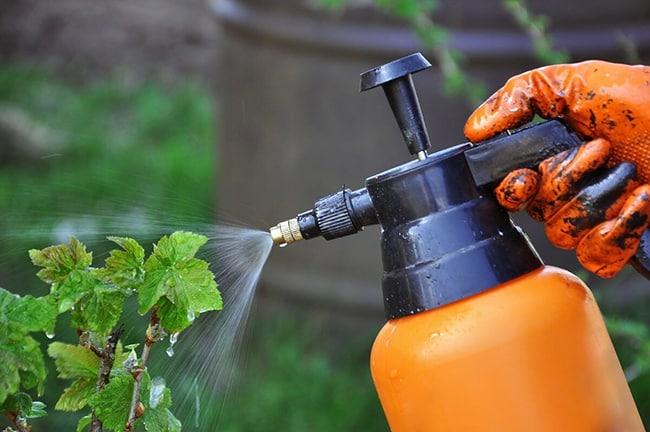
What to do if powdery mildew appears on the currants
When it was not possible to suppress the disease in the bud, and the infection begins to gain momentum, the following drugs will come to the rescue:
- Biofungicides.
- Copper sulfate.
- Topaz.
- Trichopolus.
- Iodine.
- Soda.
- Potassium permanganate.
- Mullein infusion.
- Dry mustard.
They do an excellent job with the disease, nullifying it.
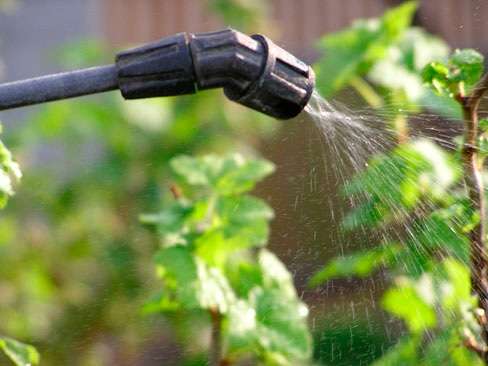
Fighting with biofungicides
Biofungicides are an excellent answer to the question of how to fight disease effectively without affecting the yield. Pros of the drug:
- safe for humans, currants and insects, which are considered natural pollinators;
- allowed to use during the ripening period of the crop.
Minuses:
- hard to store;
- in rainy weather it is quickly washed off;
- validity period is no more than three weeks;
- inferior in effectiveness to chemicals.
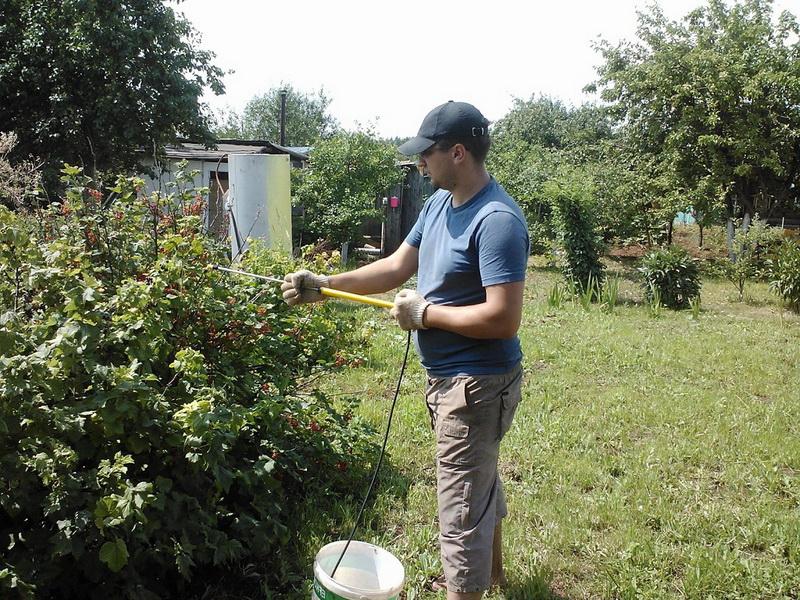
Powdery Mildew Chemicals
If you prefer to treat a disease for sure and are not afraid of using chemicals to eradicate it, the following list is compiled especially for you.
It will indicate the most effective substances that help to cope with the fungus.
Copper sulfate
A reagent hazardous to humans, when working with which you need to observe increased safety measures. Wear rubber gloves, do not dilute the drug indoors and, if possible, use a respirator.
Allocate the following drug concentrations, depending on the desired effect:
- For feeding and prevention - a solution of vitriol with a concentration of 0.3%, which corresponds to 3 grams of the substance, diluted in 10 liters of water.
- For medicinal purposes, the concentration increases and is 1%.
- To destroy especially dangerous diseases or a high concentration of mold, a 4% solution is used. A land plot treated in this way cannot be exploited for the purpose of obtaining a crop for at least 1 year. Used in extreme cases! Direct processing of bushes in this way is prohibited.
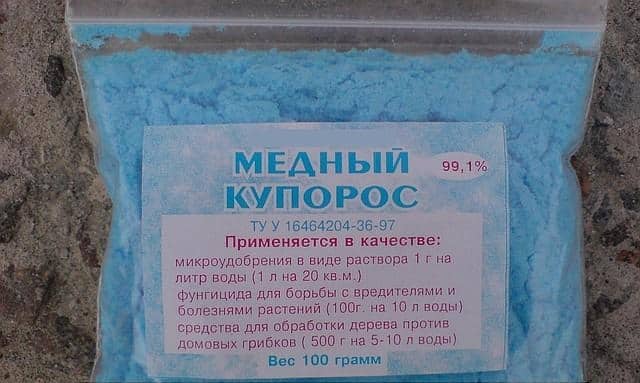
Fitosporin
A safe remedy used to eliminate a huge number of diseases, including powdery mildew. Some modifications of the drug are aggressive for humans, and work with them must be carried out taking into account safety measures.
Bees do not react well to it, and when processing the site, they must be removed to a considerable distance (up to 6 kilometers).
Topaz
Fungicide, considered the most effective against dew and, at the same time, safe for humans. Pay attention to the expiration date of the drug, as a spoiled product will harm bushes and crops. It fights the disease by stopping the spore germination into the currant structure, and then destroys them.
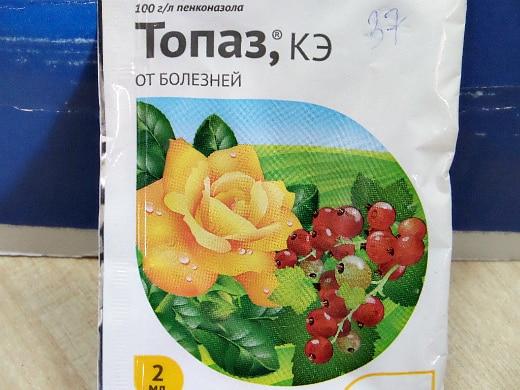
Trichopolus
The drug is used to treat humans, but due to its properties it is used by summer residents as a means of combating various plant diseases, including powdery mildew. Cheap and effective remedy.
Colloidal sulfur
Penetrates into the structure of the fungus and begins to release hydrogen sulfide, which has a detrimental effect on the parasite, destroying and killing it. It has a healing effect only on sunny days, since heat is needed to activate the process.

Treatment with folk remedies
If folk methods are closer to you, and you are trying to get rid of the disease with them, there are a couple of recipes to combat powdery mildew that can be used to save the bush from death. Among them are:
- use of iodine;
- potassium permanganate;
- infusion based on garlic;
- the use of dry mustard;
- boiling water treatment.
Potassium permanganate
Helps to cope with the disease. For this you need:
- 2.5 grams of potassium permanganate;
- 10 liters of water.
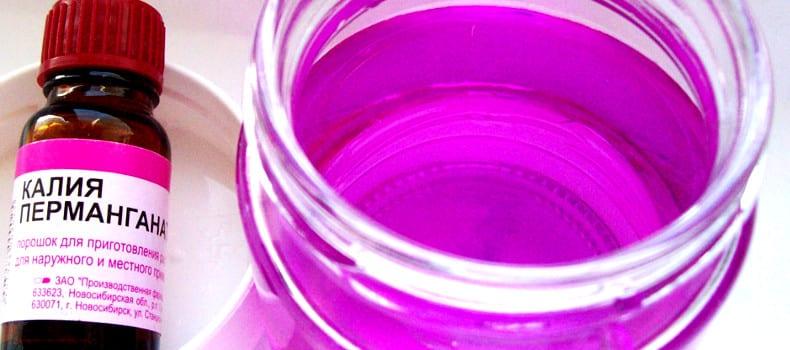
We mix and process the bushes several times, after which we take a break for a week.
Iodine
To create a solution you need:
- water - 9 liters;
- iodine - 1 milliliter;
- skim milk - 1 liter.
We mix and process the bushes once every two weeks, until the symptoms of the disease disappear.

Soda
Ingredients for the solution:
- baking soda - 2 tablespoons;
- water - 2 liters;
- vegetable oil or laundry soap - 1 spoon.
We process the fungus in the morning or in the evening, with an interval of five days.
Dry mustard
We take:
- 2 tablespoons of dry mustard;
- 1 bucket of warm water
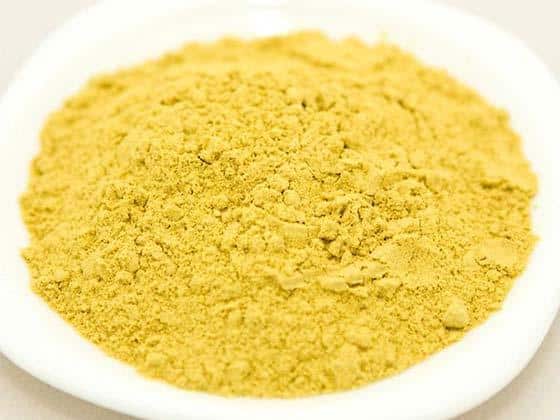
We dilute and let the solution cool, after which we process the bushes.
Garlic infusion
In 10 liters of boiled water, insist half a bucket of garlic arrows. We give the solution a day, after which we filter the liquid and process the bushes with it. Try to work both sides of the bush.
Mullein infusion
Fill a third of the bucket with cow dung and add water. Let the liquid brew for 4 days, after which we dilute with water in proportions of 1 to 10 and process the infected surfaces.
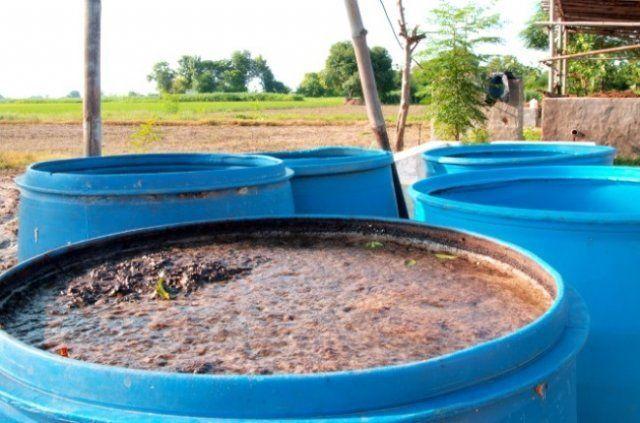
Important! Carry out the processing in the evening so as not to burn the currant leaves.
Boiling water treatment
The easiest and safest way. To implement it, you just need to boil the required amount of water and process the bush with it.Processing is carried out in the spring, before the flowering period.
Basic rules and terms of processing
To cure a plant from a disease, it is important not only to use effective methods, but also to apply them in a timely manner. Then the procedure will be beneficial, and the disease will disappear quickly and without a trace. Processing is divided into periods:
- spring;
- flowering and fruiting;
- autumn.
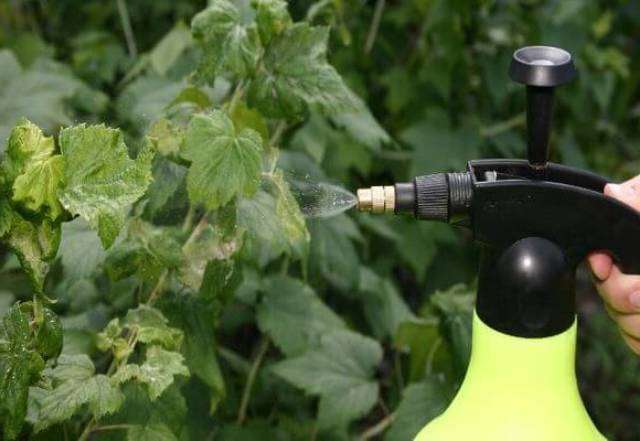
In the spring
It is useful to process the bush in the spring due to the fact that the fungus, like the plant, has not yet woken up. Such processing requires little effort and is harmless for the currant itself.
During flowering and fruiting
Processing should be carried out carefully and delicately, with preparations that will not harm either the bush or the crop. It is better to spray the bush in the summer, when the berries have already appeared. It is not necessary to process the crop with strong agents that can be deposited in the berries and get into the human body.
In autumn
Control processing is carried out after harvest. This will prepare your crop for winter and prevent the formation of new foci of infection in the spring. Burn the fallen leaves and berries, even if they do not show signs of illness.
